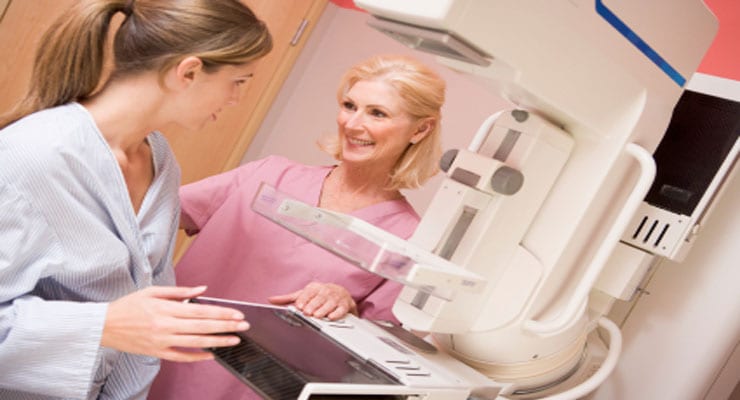The word mammogram tends to evoke a sense of dread and fear in most women. But getting a mammogram is not only recommended, it’s essential for a woman’s health.
Breast cancer is devastating – and more common than you may think. U.S. breast cancer statistics show that 1 in 8 women will develop invasive breast cancer over the course of her lifetime. Second to skin cancer, it is the most commonly diagnosed cancer among U.S. women (approximately 1 in 4 cancers in women are breast cancer).
Mammograms have been shown to lower the death rate among women over 50 with breast cancer by 35%. With this in mind, it’s important to detect breast cancer early with the use of mammograms. Read on to learn the what, when and how of mammography.
What is a Mammogram?
A mammogram uses X-ray technology to examine the breasts with the goal of detecting breast cancer early. It’s been used as a diagnostic and screening test for women for about 40 years. A mammogram takes photos of your breast tissue either with film-screen mammography or digital mammography. The technique is the same. The difference lies in how the results are presented. A film-screen mammogram will show black and white images on a sheet of film, and a digital mammogram will record images directly to a computer.
If you are under the age of 50, it is recommended you receive a digital mammogram to show more detail. As always with detection tests, there can be false negatives (you have cancer, but it doesn’t appear in the test) or false alarms (the tissue shows tissue that appears to be cancer, but is not). Mammograms can miss up to 20% of breast cancers.
When Should You Get a Mammogram?
There is varying information circulating about when women should begin getting mammograms. Currently, it is recommended you get a mammogram annually, beginning at age 45. However, it’s important to talk to your doctor about when to begin getting mammograms. If you have a family history of breast cancer, you may need to be screened sooner, around age 30.
The Mammogram Process
There are two types of mammograms- screening and diagnostic. When you begin getting mammograms, you will receive screening mammograms annually. A diagnostic mammogram is done when doctors have reason to believe you may have cancer. Screening mammograms take photos from two different angles of both breasts. Diagnostic mammograms are more thorough and will generally take photos from multiple angles.
During the procedure, the breasts are compressed one at a time to even out the tissue for easier reading. Some women will experience pain and some will experience nothing more than discomfort. The process generally takes no longer than 20 minutes. An insider tip- deodorant, lotion or powder could potentially show up as calcium spots on the x-ray, so avoid using these on exam day.
Don’t wait until it’s too late! Respect yourselves and your bodies and catch breast cancer early by getting annual mammograms. Remember to talk to your doctor about what is right for you. Lastly, tell your daughters, mothers, sisters and friends to get screened as well. There’s no excuse for skipping out on something that could save your life.





